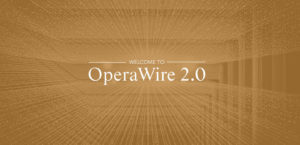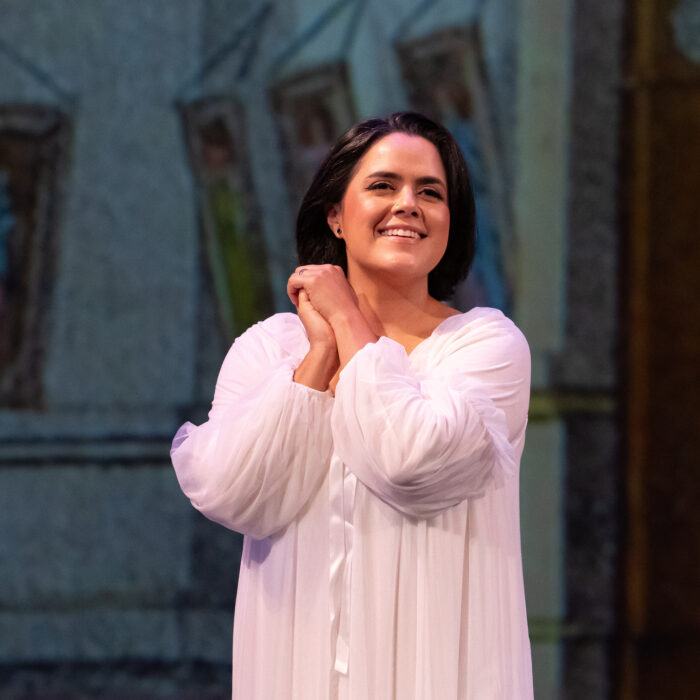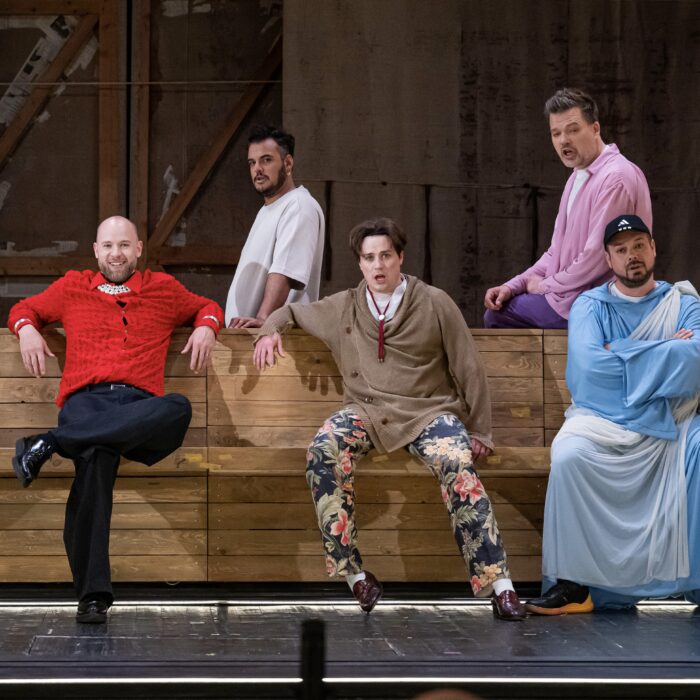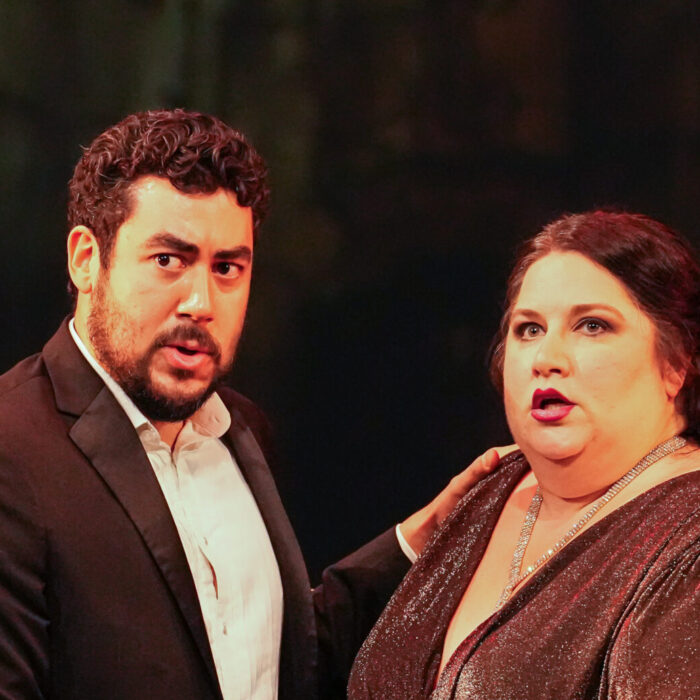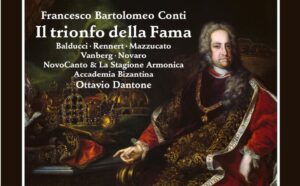
CD Review: Innsbruck Early Music Festival’s ‘Il trionfo della Fama’
By Mengguang HuangAs usual, the 2024 Innsbruck Early Music Festival brought a rare work to the stage: Francesco Bartolomeo Conti’s “Il trionfo della Fama,” a one-act serenata composed in 1723 for the coronation of Emperor Charles VI and Empress Elisabeth Christine in Prague. Conceived as court propaganda, the serenata was commissioned to glorify imperial virtues and Habsburgs’ claims to the divine favor through allegorical personifications: Fama (Fame), Valore (Valor), Gloria (Glory), Genio (Genius), and Destino (Destiny). Each character offers a different reflection of the emperor’s idealized qualities. The performance recorded on this disc, given by Accademia Bizantina under Ottavio Dantone, rendered this political showpiece into a vivid concert drama.
The opening sinfonia surged with restless energy, bolstered by bold brass writing, solid lower string section, and striding, spirited motifs that captured the festive pomp demanded by the coronation serenata. Beneath the surface brilliance, one could easily sense the ceremonial rigidity of Conti’s political assignment. The choral entrance that followed, luminous in tone, was equally steeped in purpose: oboes launched a dramatic volley of repeated-note figures before the chorus proclaimed the emperor’s virtues with glowing, almost obligatory majesty—an aesthetic grandeur inseparable from its propagandistic intent.
The soloists brought each allegorical character to life with flair and individual nuance. Nicolò Balducci as Fama impressed with his imposing vocal presence and commanding delivery. His da capo arias, though somewhat too straightforward in many of Conti’s rhythmic designs, carried an authoritative sweep—if not the most lyrically engaging moments, they served their ceremonial function with conviction.
Baritone Riccardo Novaro’s Valore was strikingly shaped by angular melodic lines, effectively conveying both martial strength and moments of self-doubt drawn from the libretto. His aria, ‘L’Asia crolla, Africa teme,’ offered a more curious contrast: while the bassoon obbligato featured passages of remarkable virtuosity, the resulting musical image occasionally felt oddly contrived. The intricate dialogue between voice and instrument, sometimes lacked a natural cohesion in musical design, lending the aria a slightly mannered character.
His vocal color embodied a graver type of heroism, quite distinct from the glittering self-confidence of Gloria, sung by mezzo-soprano Sophie Rennert. With a bright, metallic timbre and piercing projection, Rennert’s portrayal hinted at a pride bordering on vanity—an effective take on the allegory of fame’s glamorous twin. In her central aria, ‘Spira il ciel più bell’aure di Gloria,’ full of jagged rhythms and breath-defying runs, the section showcased the singer’s breath control and agility. The vocal lines, rolling up and down in rapid succession, mirrored the rhetorical exuberance of Baroque courtly praise. It was in this moment that the allegory shed its stiffness and revealed something vibrant and theatrical.
One of the most impressive performances came from Benedetta Mazzucato as Genio. Her warm, mature alto voice brought depth and complexity to her entry aria, which began tentatively with halting rhythms, like probing through uncertainty. Mazzucato’s sensitive phrasing and subtle pacing made this a highlight of the evening, as did her later duet, ‘Gloria a’ piè del soglio,’ with Gloria. This duet burst with energy, the voices chasing and challenging each other, while the oboe added brilliance—truly one of the most exhilarating passages.
Martin Vanberg’s Destino possessed the most operatic passages of the whole serenata. With fleet changes of tempo, clipped phrasing, and tightly coiled figures, his music evoked an almost Vivaldian spirit. The aria, ‘Ogn’astro che splende,’ with solo violin was especially striking, dramatizing fate’s capricious nature with quicksilver brilliance.
Ottavio Dantone led Accademia Bizantina with clarity and precision. His direction from the harpsichord shaped the performance with both grandeur and restraint, never letting the ornate orchestration overwhelm the singers. The ensemble’s attention to texture—especially in the differentiated string dialogues and wind coloration—underscored the theatrical dimension of the score. The two choirs, La Stagione Armonica and NovoCanto, sang with excellent balance and diction, contributing to the radiant sonic architecture of the work at the beginning and conclusion.
The production succeeded not only as a revival of a forgotten jewel but also as a subtle commentary on the fusion of politics and art in the Baroque era. For all its splendor, certain musical gestures—exaggerated affective contrasts, formulaic virtuosity, or the insistent praise of imperial virtue—may conceived by modern ears as overly grandiose or emotionally contrived. Yet therein lies part of its value: “Il trionfo della Fama” offers a perfect glimpse into how music once served not just to delight, but to affirm power, shape ideology, and render sovereignty audible. The performers did not shy away from this aspect; instead, they embraced it with assurance and natural flair, allowing the music’s ceremonial character to emerge with both conviction and clarity.
